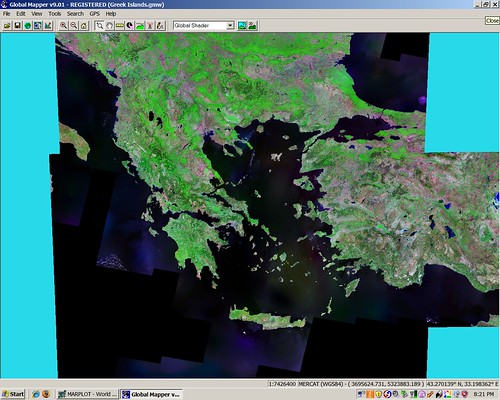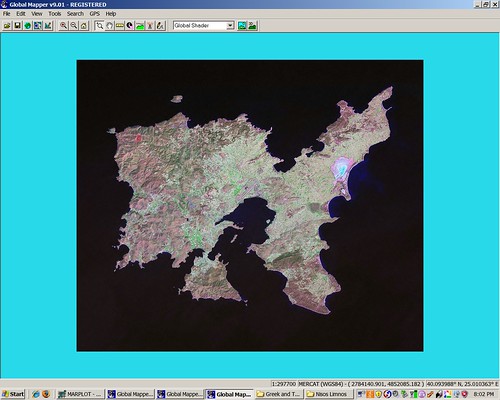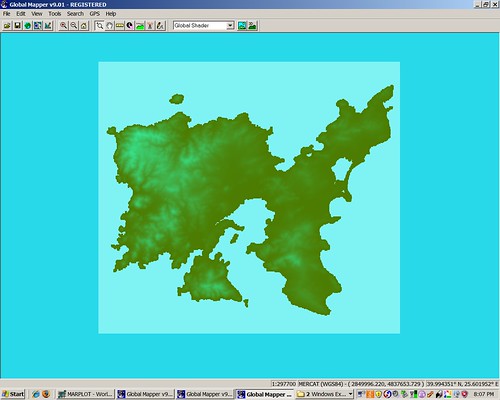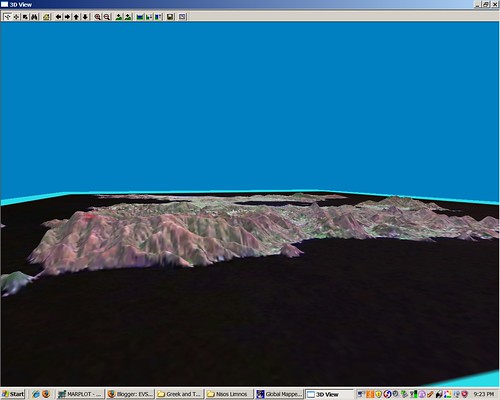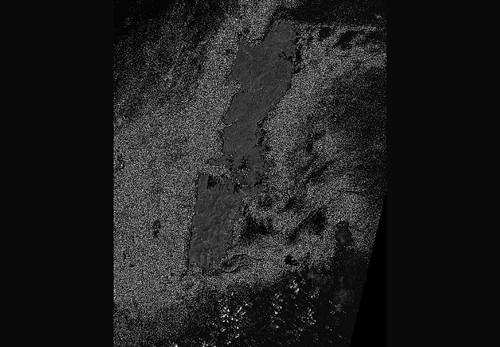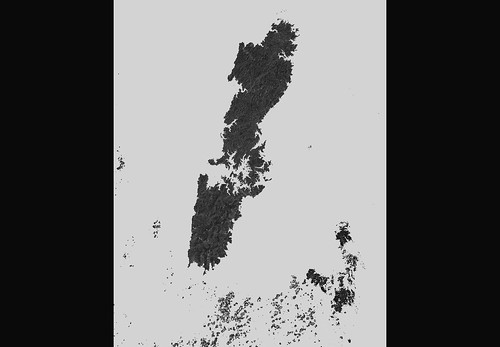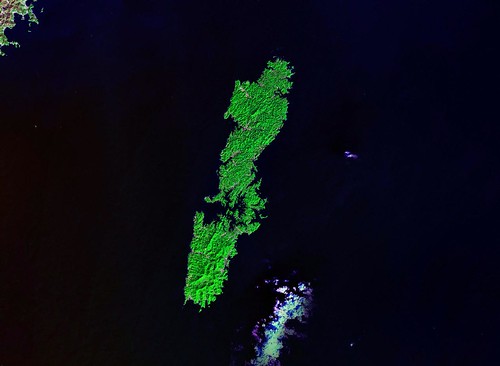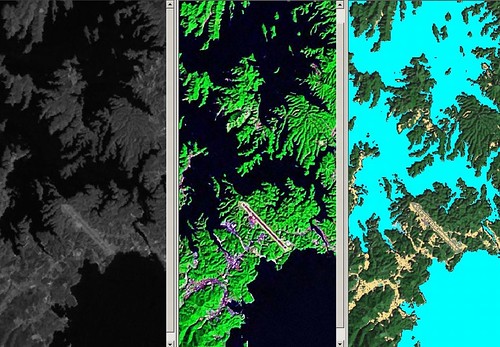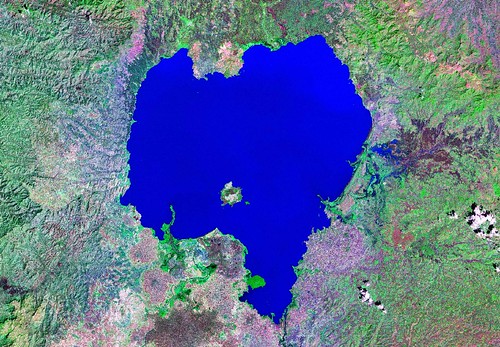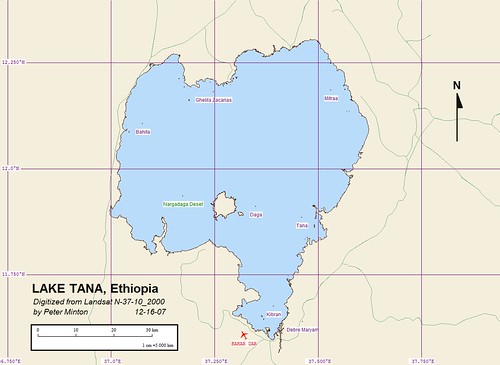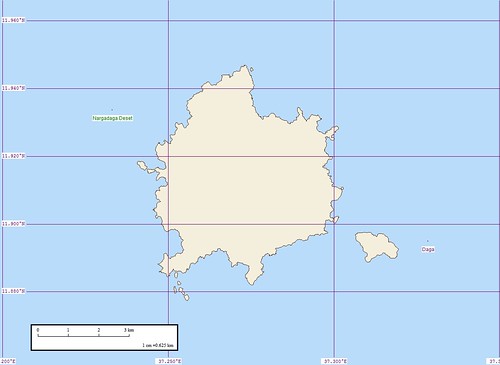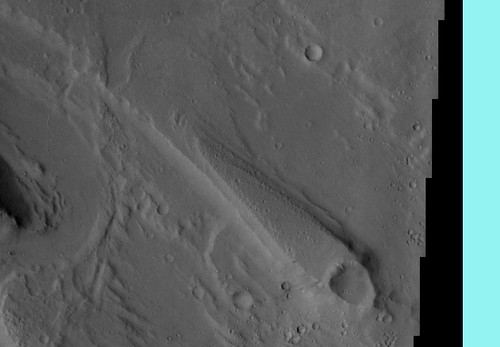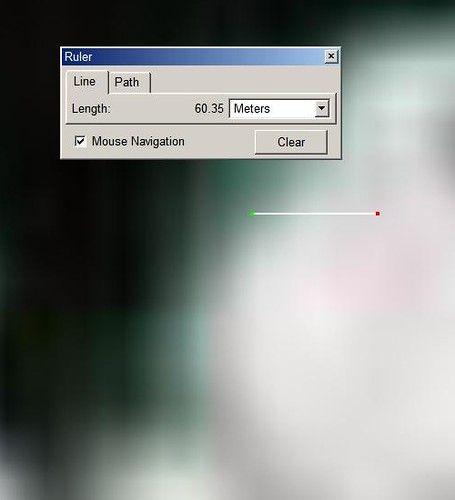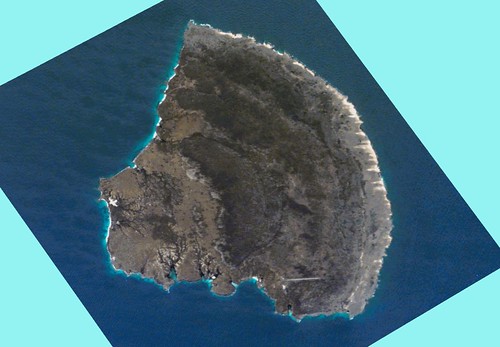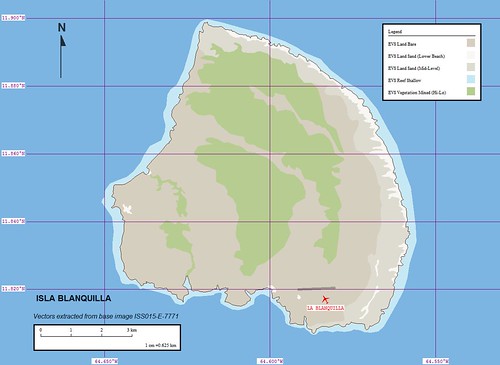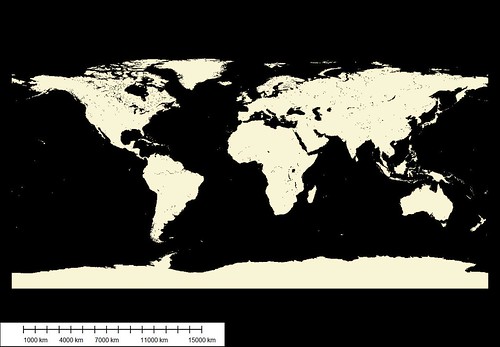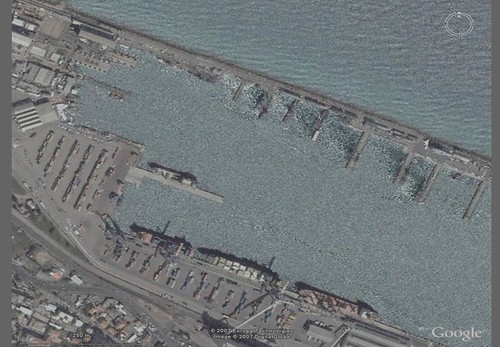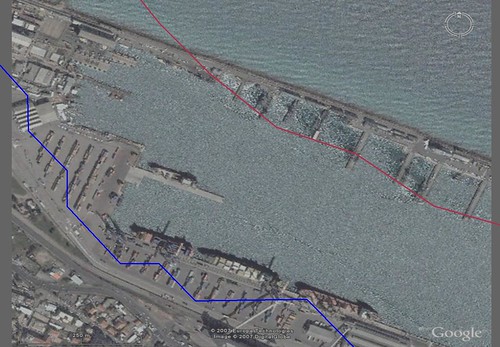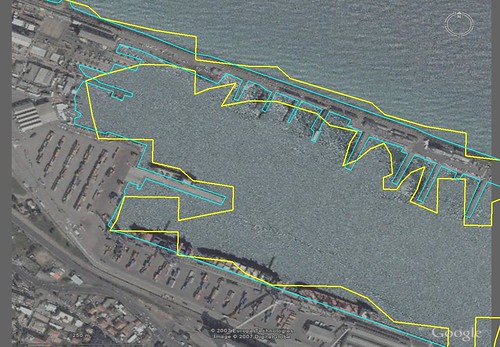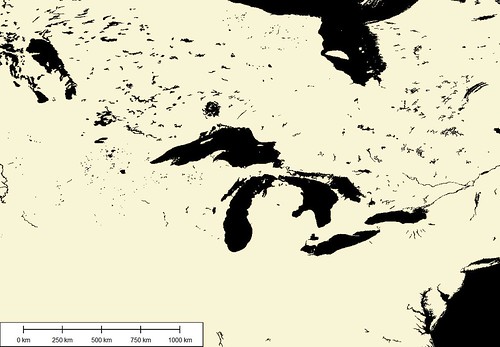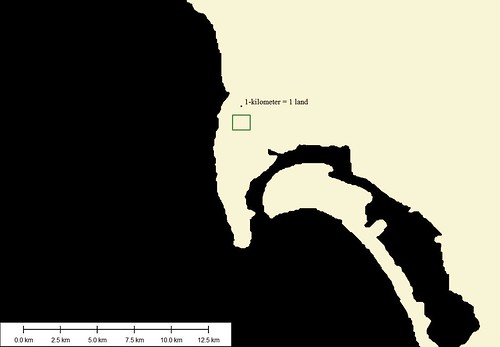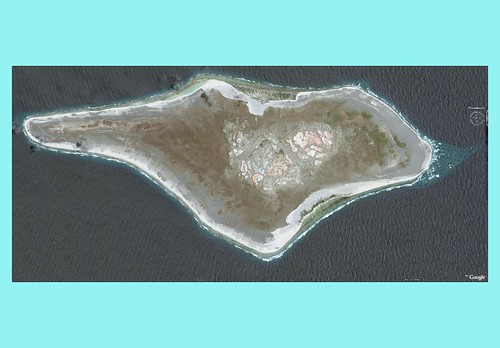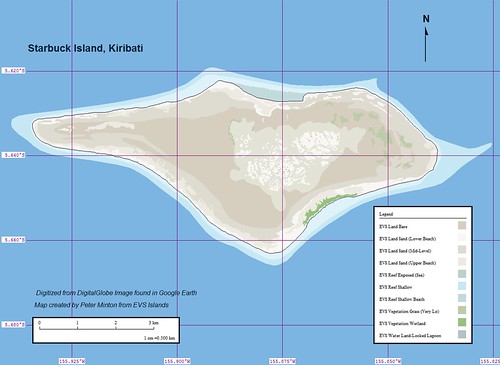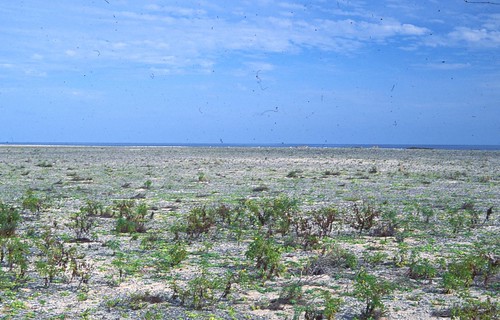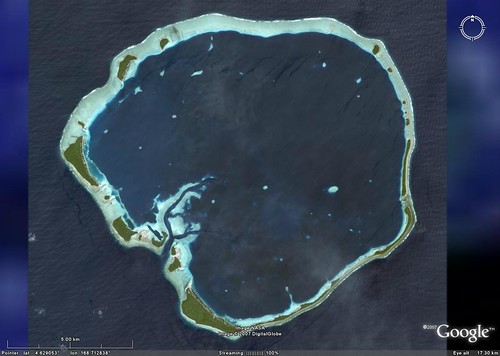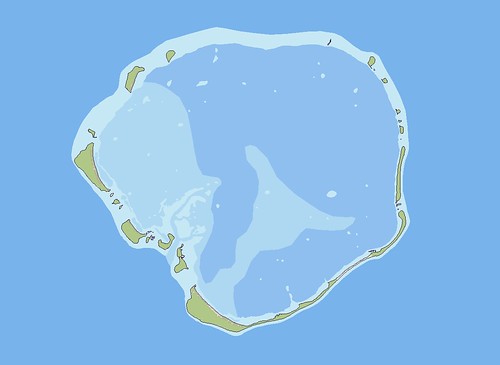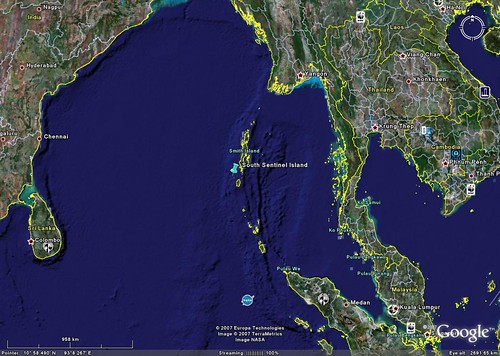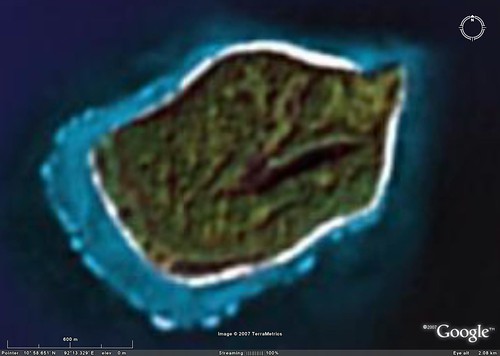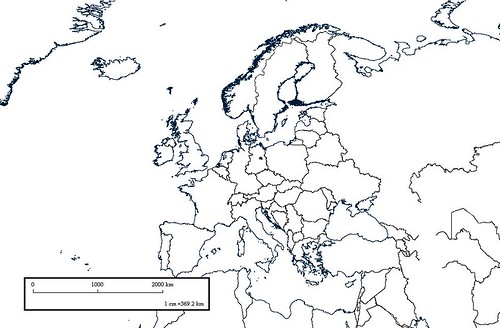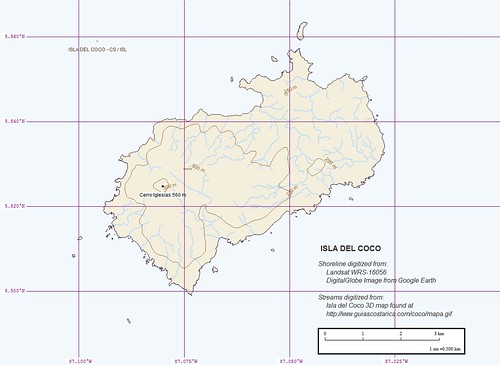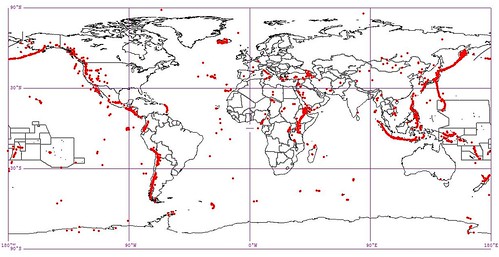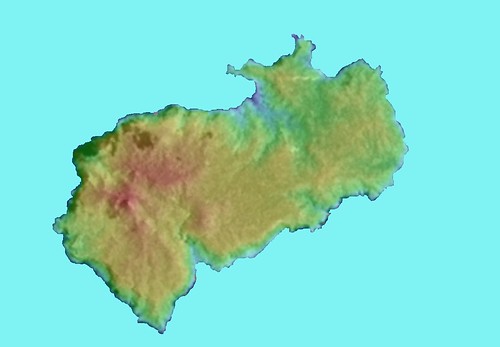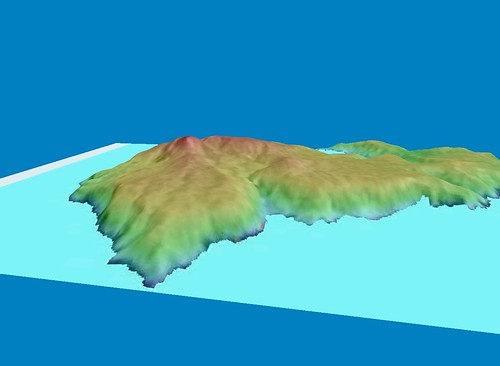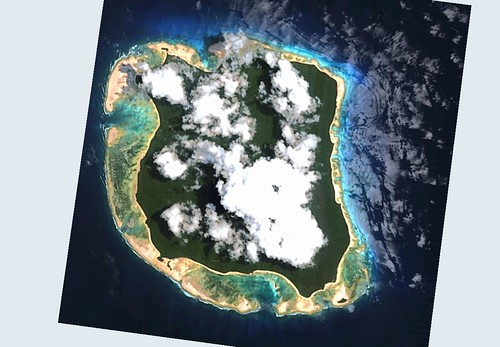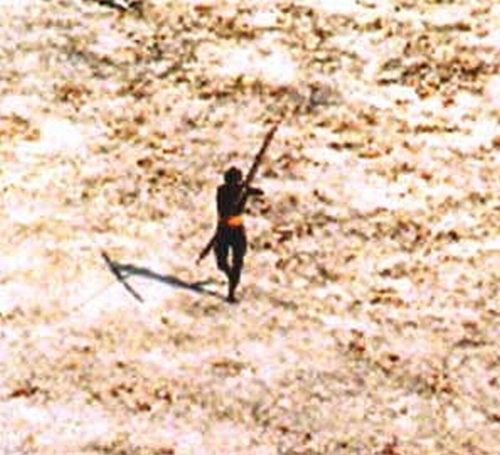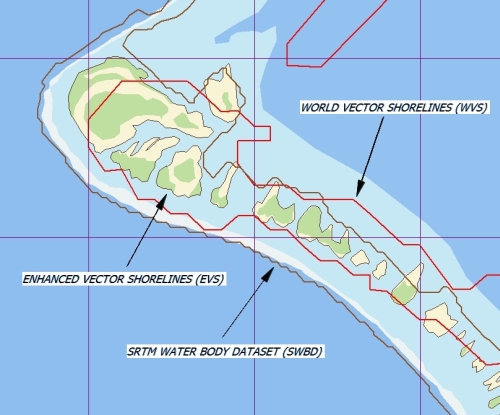
Three Vector Shoreline's Compared - WVS, SWBD and EVS Precision
One of my readers suggested I evaluate SWBD shorelines in comparison to other freely available shorelines. Previously, I compared these shorelines with my own EVS precision shoreline. I'll do it once more.
The WVS is widely available and manageable in size. There is another popular version of it called the GSHHS. It repairs varous WVS anamolies. In addition, it conveniently breaks the dataset into land, lakes, ponds and islands. At only 56MBs zipped, it is a very attractive option. As one can see in the two images, the WVS is the least precise of all large scale global shorelines. It is designed to be used at scales of 1:250,000 and above. For most of us designing projects for our classroom, employers or customers, this dataset does a fine job, it is free and the size is reasonable. It is when we need to do large scale precise shorelines that we require the next best global shorelines
Although the SWBD is a quality product and provides the end-user with precise SRTM water-defined shorelines, it tracks the water. The SWBD attempts to identify the place where the water meets the shore. That should be the shoreline, but it isn't. The top image shows the SWBD shoreline tracking the reef edges and ignoring the numerous motus within the reef. For us island mappers, the SWBD is not precise enough to identify the many shoreline features we require.
The same can be said for the NGA PGS shorelines. They are extremely precise, using Landsat ETM+ imagery as their base imagery. This is the same imagery I use to construct my EVS precision maps. I have the NGA PGS shoreline loaded into Marplot, a mapping package I use. The dataset is divided into 24 separate groups. My global coverage, using this dataset, is outstanding - except where clouds or other atmospherics obscure the shoreline or the shoreline consists of water-inundated areas (marsh, swamp, mudflats), which the NGA PGS product didn't identify. The cloud obscured areas on Landsat ETM+ imagery are validly poorly mappable to unmappable. The water-inundated areas are mappable, but the NGA contract called for the exclusion of these shoreline features, thus they were not mapped. I beg to differ. This is shoreline that must be mapped. There are massive river deltas NGA PGS mapped that depict shorelines that look nothing like the original Landsat ETM+ image, which is full of features that the NGA PGS product did not map. They just happen to be water-inundated. They are features you and I would describe as shoreline. Make no mistake, when the shoreline is cloud-free and not water-inundated, which most Landsat imaged shorelines are, this global shoreline dataset is outstanding. It's just all of those river delta islands that they didn't map that I have a problem with.
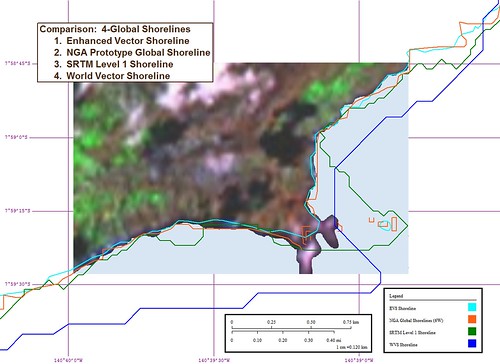
Four Vector Shoreline's Compared
However, my EVS precision shorelines are pretty outstanding as well. When one compares my hand-drawn shorelines to programmed color tracking shorelines (or many other automated processes), my hand-drawn shorelines track quite precisely. Something about using one's brain processing powers, manual dexterity and years of experience that consistently allows one to create more precise shorelines than the WVS, SWBD and NGA PGS products.
As I work with Landsat ETM+ imagery and learn more about the digitizing craft, I am certain software is available that could do what I do more accurately, faster and in much less time. But it wouldn't be as much fun! Would it?
Enjoy!
